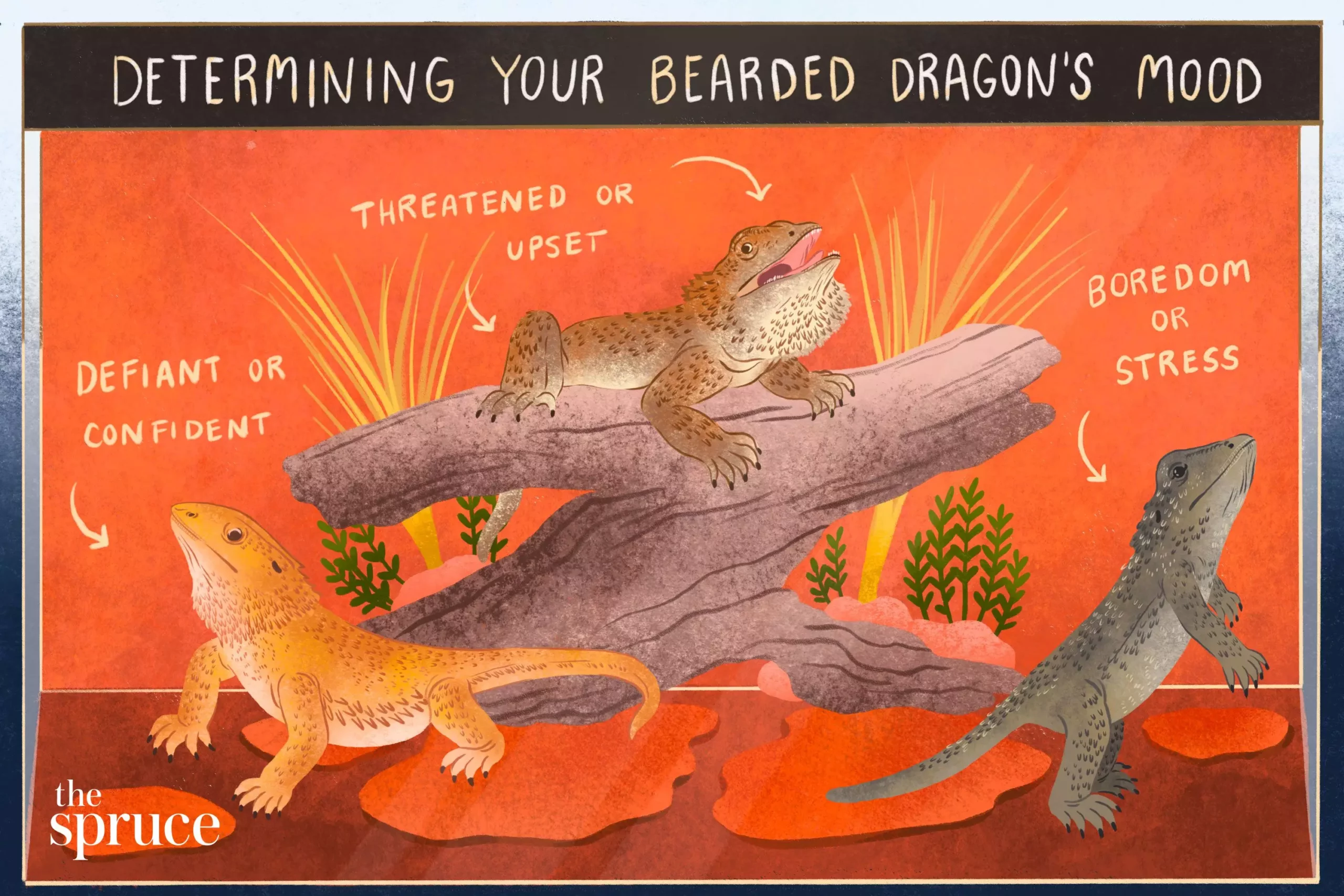Bearded dragons, known for their friendly demeanor and ease of care, exhibit an array of fascinating behaviors that provide insight into their emotions, health, and social interactions. Understanding these behaviors is crucial not only for providing optimal care but also for fostering a healthy bond with your pet. In this article, we will delve into the common behaviors observed in bearded dragons, highlighting what is considered normal behavior and what may be indicative of stress or illness.
The primary mode of communication for bearded dragons is through body language, with arm waving and head bobbing being two key gestures. Both male and female bearded dragons engage in arm waving as a sign of submission. This behavior is particularly notable in young dragons, who may use a slow wave to signal vulnerability—essentially saying, “I mean no harm!” This is especially common when they encounter unfamiliar dragons or larger creatures, including their human caretakers.
Conversely, head bobbing is indicative of dominance, usually exhibited by more mature or confident bearded dragons. This behavior resembles a nodding motion and signals assertiveness, particularly when a dominant dragon encounters a younger counterpart. Such interactions are vital to establishing social hierarchies within a mixed troop of bearded dragons.
One of the striking features of bearded dragons is their ability to change color, particularly in their beards. The concept of a “beard” in these lizards involves the darkening of the throat area. When threatened or agitated, this beard can puff up and turn dark, serving as a visual indicator of stress or discomfort. Conversely, a lighter skin tone may suggest impending shedding. Significant changes to coloration often warrant observation; sudden shifts could be symptomatic of health issues or emotional distress.
For instance, coloration that shifts to dark during vet visits can be attributed to the stress of travel and unfamiliar environments. A bearded dragon should ideally be kept warm and comfortable during such trips to mitigate stress responses.
In addition to communication signals, bearded dragons display certain behaviors that may indicate stress or discomfort. One notable behavior is “glass surfing.” When dragons repeatedly run alongside the walls of their enclosure, it may seem amusing, but it’s an abnormal behavior signaling restlessness or boredom. This could suggest the need for a larger living space, more stimulating activities outside their tank, or even the presence of stressors in their environment, such as other pets eyeing them with curiosity.
Glass surfing can lead to physical injuries, including sore pads or abrasions, so it’s essential for owners to address the underlying causes of this behavior promptly.
Female bearded dragons may engage in burrowing behavior when they are ready to lay eggs. In the wild, bearded dragons instinctively dig to create nesting sites for their clutches. If you own a female dragon exhibiting digging behavior, it’s crucial to provide proper substrates that mimic their natural environment. Additionally, monitoring their calcium intake and overall health is important, as some females become egg-bound—a condition where eggs cannot be laid without veterinary intervention.
If your pet exhibits this behavior, consult with a veterinarian who specializes in reptiles to ensure she remains healthy and monitor her laying cycle.
Brumation is a term that refers to a state similar to hibernation in reptiles. While it is a natural process for wild bearded dragons during cooler months, responsible pet owners should be cautious in recognizing when this behavior appears in captivity. Signs of brumation include reduced activity, noticeable lethargy, and lack of appetite. While the natural inclination may be to allow brumation, it is generally advisable to maintain normal lighting and heating levels and to continue providing food.
Should these behaviors persist, it is vital to consult with a qualified exotic veterinarian. They can discern whether the dragon is merely brumating or if there are underlying health concerns that need addressing.
Understanding the behavioral traits of bearded dragons is fundamental for any owner. By recognizing behaviors such as arm waving and head bobbing, noting color changes, and being aware of stress indicators like glass surfing or digging, pet owners can create a supportive environment that fosters both health and happiness for these captivating reptiles. Always prioritize your dragon’s well-being by maintaining consistent care and seeking veterinary advice when necessary. By fostering empathy and attentiveness, you can ensure that your bearded dragon enjoys a rich, fulfilling life.

